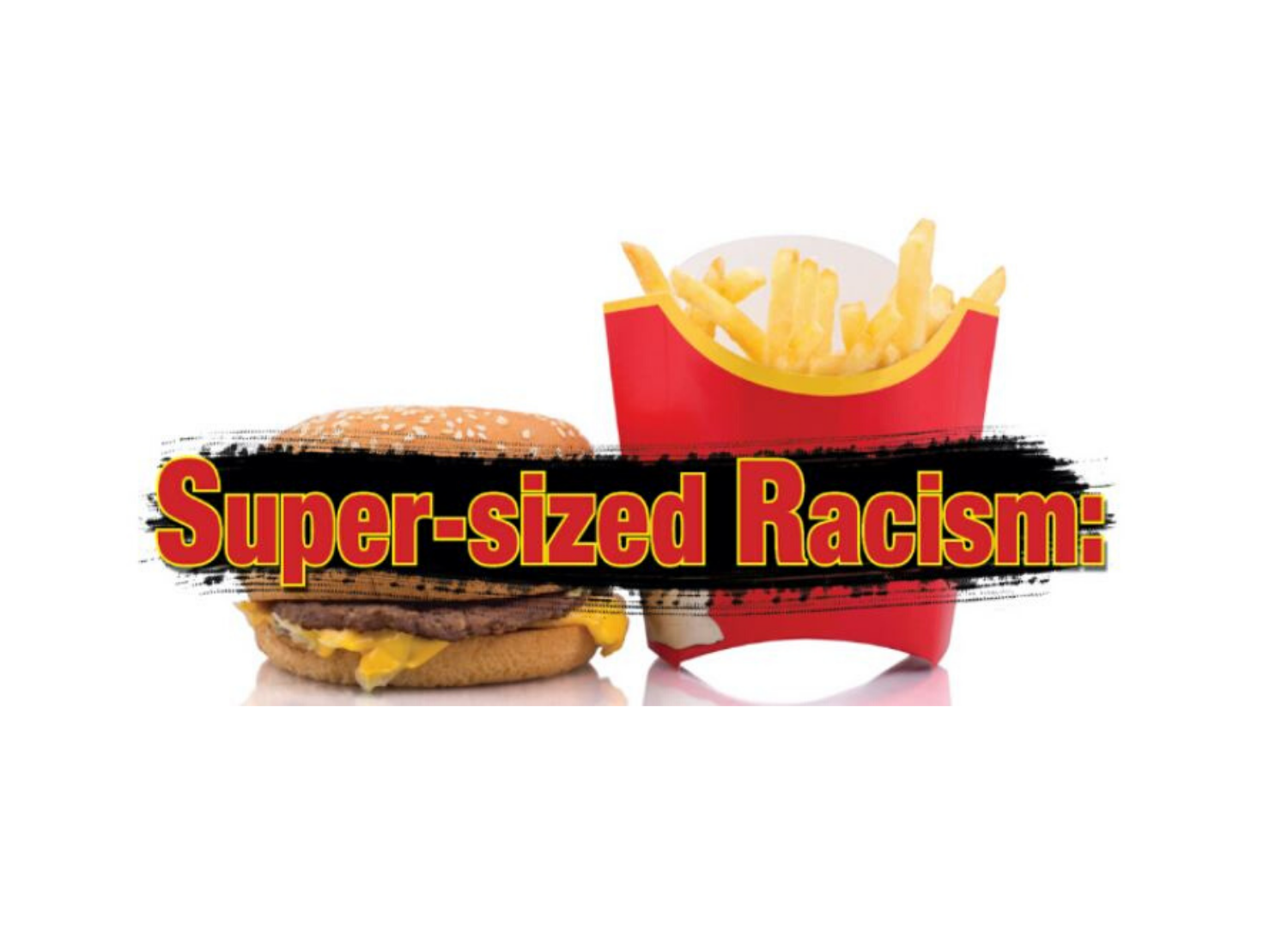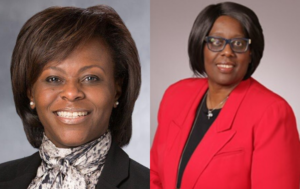
Super-sized racism: former McDonald’s execs strike back in explosive race discrimination lawsuit
As appeared first in the Michigan Chronicle
By Trevor Coleman and Trevor W. Coleman II
For more than 50 years the McDonald’s Corporation took pride in branding itself as a socially conscious corporation particularly interested in doing business in abandoned and long-ignored Black communities while embracing racial diversity as a critical component of its corporate ethos.
It is a philosophy that helped create a popular narrative and also focus on story that the Chicago-based company was a progressive business and a place where African Americans could grow, find mentors, promotions, and economic opportunity.
However, that image was shattered this year in an explosive lawsuit brought by two African American female executives who claim that under new leadership the company not only deliberately divested from the Black community and businesses, but hurled racist, sexists insults at them including referring to the employees at “niggers” and “angry Black women.”
Adding further injury to the grotesque insults, the women also claimed when they spoke up about such treatment they were demoted and the perpetrators were promoted.
The shocking accusations have rocked the fast-food industry especially since McDonald’s has long projected itself as a leader in diversity initiatives and as an aggressive recruiter and developer of African American talent and entrepreneurs.

Domineca Neal and Vicki Guster-Hines
But Domineca Neal and Vicki Guster-Hines, former vice presidents of the fast-food chain, allege the discrimination and harassment started and progressive programs came to a screeching halt following a change in corporate leadership at McDonald’s in 2015. In their suit they said the new regime engaged in systemic racist and discriminatory behavior and civil rights abuses against them and other Black executives.
Among the allegations were that one top white male executive repeatedly referred to them as “angry Black women” and another who earlier had referred to Black employees as “niggers” shockingly being promoted rather than disciplined following a complaint filed against him for such racially abusive language.
In an exclusive interview with the Michigan Chronicle, Neal, a native Detroiter, said the harassment began shortly after the new CEO, British-born Steve Easterbrook, came on board in 2015 and initiated a corporate restructuring plan that de-emphasized racial diversity and input from Black executives and franchisees. She and Guster-Hines were then demoted from vice-president to senior director positions in July 2018.
They are seeking compensation following those demotions, claiming that they occurred as a result of discrimination.
“When they assumed leadership, it became very clear that African Americans stakeholders were no longer a strategic priority and the environment became toxic,” she said. “An example would be, you know, cutting advertising spending with African American agencies that impacted, of course, African American customers and local community organizations, and it didn’t make economic sense, it didn’t make good business sense.”
McDonald’s commitment to diversity was so widely known and promoted that it was regularly named among the Fortune 500 top corporations for diversity and inclusion and other companies would benchmark against them.
That reputation, however, is now threatened by the lawsuit scheduled to be heard in the Northern District Court of Illinois next month or early August. Besides Easterbrook; who was let go last year after it was revealed he was involved in an affair with a colleague in violation of company policy, also named in the suit are the current CEO, Chris Kempczinski, and Charles Strong, the chief field officer.
At its bare essence, the women allege in the suit the world’s largest fast-food restaurant chain has “declared war against the African American community.”
She noted her observation is based on its new business plan and corporate leadership’s attitudes toward African American employees and owner-operators who had the majority of restaurants in African American consumer markets and would be impacted, more so than others. “And that action coincided with a significant reduction in the number of African American owner-operators.”
When Neal and other executives brought these concerns to the attention of leadership, they began to retaliate against them. They defunded the company’s African American Diversity Council and it subsequently became dormant. The Council provided career development and a talent pipeline for African American employees. And soon the demotions started with African Americans being targeted for elimination such as herself and Guster-Hines, leaving no African Americans at Kempczinski’s leadership table during his tenure as president of McDonald’s USA to advocate on behalf of Black employees, franchise operators, or customers. The suit claims the number of African American executives in the top ranks of McDonald’s operations fell to seven in 2019 from 42 in 2014, the year before the new regime came on board.
The suit also alleges:
- Before Easterbrook and Kempczinski’s arrival, African American consumers generated 20% of all revenue for McDonald’s US stores.
- Easterbrook and Kempczinski caused a decrease in advertising to attract African American patronage. The constant cutting in the funding of programs for building African American leadership resulted in the system-wide purchases by African Americans to decline by 6%.
- Nearly one out of three African American franchisees left the McDonald’s system since Easterbrook arrived which was disproportionate to the loss of non-African American franchisees.
But among Neal’s and Guster-Hines’ most shocking claims was the racist, sexist taunts they had to endure from the McDonald’s executives. The suit alleges that in 2005 Marty Ranft, a white vice president and general manager of the McDonald’s Ohio Region told Guster-Hines “You are a nigger like all the rest-–you just believe you are better cause you are a smart one.”
She further alleges she reported Ranft to her supervisors and emphasized that she would not tolerate being called a nigger within McDonald’s or anywhere else. She said there was no response to her complaint from the corporation and Ranft was eventually promoted to Vice President of Development for the entire U.S.
The suit also alleges in 2017 Strong, who supervised Neal and Guster-Hines and at the time responsible for 50% of the U.S. business and about 14,000 restaurants, instructed Neal not to consult with or take the advice of two African American women, Bridgette Hernandez and Barbara Calloway who had been promoted over Strong’s opposition. She alleged he stated, “We don’t need any of that Black woman’s attitude. They are too angry and aggressive.”
The next year in March 2018, Strong allegedly told Guster-Hines that five African American women, Chioke Elmore, Regina Johnson, Hernandez, Calloway and Neal, were “angry Black women” that “always seemed to be mad about something.” He then allegedly asked Guster-Hines to explain the source of their anger.
The five women constituted 40% of female African American vice presidents as of March 2018. And were three out of five vice presidents reporting to Strong when he allegedly made these statements.
“So that was shocking that he was so openly discussing that with various stakeholders that we were angry Black women,” Neal said.
But what she, Guster-Hines, and others found even more jarring and demoralizing was after they shared Strong’s racist, sexist, and demeaning remarks to his superiors, he, too, was promoted and they were demoted.
“In shocking ways difficult to overstate, McDonald’s under Easterbrook and Kempczinski declared a war against the African American community,” the lawsuit alleges.
Neither the McDonald’s Corporation Media Relations Department or the lawyer representing them, Nigel F. Telman of Chicago, returned calls from the Chronicle by publication deadline.
However, in a statement to the media in January, issued at the filing of the suit, McDonald’s said it disagreed with the characterization of the company’s behavior. It said 45% of its corporate officers and all of its field vice-presidents are people of color.
“At McDonald’s, our actions are rooted in our belief that a diverse, vibrant, inclusive, and respectful company makes us stronger,” the company said. “While we disagree with characterizations in the complaint, we are currently reviewing it and will respond to the complaint accordingly.”
Carmen D. Caruso and Linda C. Chatman, the Chicago-based trial lawyers representing Neal and Guster-Hines said the behavior by McDonald’s executives constituted some of the most egregious acts of racial discrimination they have ever been confronted with in their careers.
“Under the guise of reorganizing the way they manage the franchise system, the restaurant system across the country, they basically decimated the ranks of the African American leadership and employees,” Caruso said. “That to me is one of the most glaring act of intentional discrimination that we saw in the case. And we lay those numbers out in greater detail in the complaint itself. But that was very, very, serious discrimination in employment, and it’s over and above a lot of other things that came before and other things that have come after, but that’s kind of a centerpiece of the discrimination against the executive employees, including Domineca and Vicki.”
Chatman agreed and said that they are also arguing that McDonald’s will try to argue that their promotion and demotion policies are neutral because they are based on data, not race. The racially hostile work environment had a particularly destructive impact upon Black employees, including Domineca and Vicki.
“The crux of it is that, under Easterbrook and now Kempczinski, McDonald’s is not interested in, or focused upon, Black customers, Black franchisees or Black executives, as evidenced by how they decimated their ranks at the corporate level,” she said.
“Domineca and Vicki were forced to witness McDonald’s blatantly deemphasize Black people and the effect upon them was terrible,” Chatman said. “I mean, how are they supposed to work in an environment that is openly hostile to people who look like them.”
Neal said when Kempczinski was told about concerns that there weren’t any Blacks on his U.S. President executive team, he said he can the ask questions “the numbers don’t matter.”
“But, the numbers do matter,” Chatman said
Caruso said the bottom line is that they are alleging their clients were victims of intentional discrimination and it came from the very top of the McDonald’s organization in the person of Steve Easterbrook and Christopher Kempczinski.
“It was not an accident that all this happened to Domineca and Vicki, and other African Americans in the company,” he said.
Neal, reflecting on her time at McDonald’s recalled how happy she was to join the organization in 2011 precisely because of its reputation for embracing the African American community.
“And we embraced them, and that was shown through the loyalty to the brand, the representation of African American talent at all levels throughout the organization and the opportunities to create wealth for the African American owner-operators which was also very inspiring and a representation of their diversity and inclusion values,” she said.
Now, after leaving the corporation in March, Neal still finds the swift turnabout in the company’s attitude and values – after nearly 50 years of progress – disconcerting. She said the whole “angry Black woman” incident felt as if she was living in an episode of Mad Men.
She is left to wonder how sincere the corporation was about diversity and inclusion in the first place. She noted things would never have had gotten out of hand as it did if the Board of Directors had come down on the executives. But they didn’t.
“It was very disheartening, heartbreaking, and shocking because I think that we’re at a stage in society, where we know that’s language that is racial in nature and stereotypical and used in a manner to quiet African American women from being able to comfortably bring their authentic selves to the workplace,” Neal said.
This story is developing. Stay tuned for Super-sized Racism Part 2, next week.
Sorry, the comment form is closed at this time.
